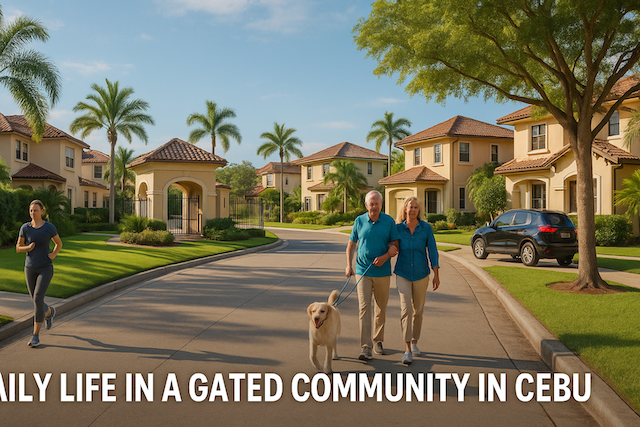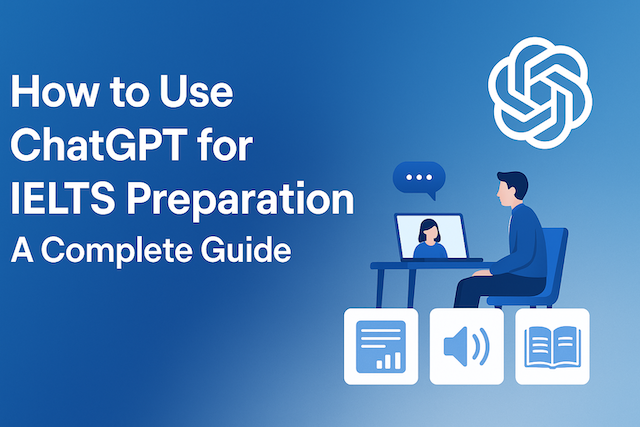Daily Life in a Gated Community in Cebu

Contents
- Daily Life in a Gated Community in Cebu
- 1. What is a Gated Community?
- 2. Popular Gated Communities in Cebu
- 3. A Typical Day in a Gated Community
- 4. Security: A Major Draw
- 5. Community Events and Social Life
- 6. Amenities and Facilities
- 7. Cleanliness, Order, and Aesthetic Standards
- 8. Homeowners’ Association (HOA) and Rules
- 9. Visitor and Delivery Management
- 10. Pets and Outdoor Activities
- 11. Remote Work and Internet Connectivity
- 12. Transportation and Accessibility
- 13. Education and Nearby Schools
- 14. Healthcare Access
- 15. Environmental Benefits
- 16. Safety in Natural Disasters
- 17. Renting vs Buying in Gated Communities
- 18. Cost of Living in a Gated Community
- 19. Downsides to Consider
- 20. Final Thoughts: Is Gated Living for You?
- Frequently Asked Questions: Daily Life in a Gated Community in Cebu
- 1. What is a gated community?
- 2. Are gated communities in Cebu safe?
- 3. How much do HOA fees cost?
- 4. What are common amenities inside a gated community?
- 5. Are pets allowed in gated communities?
- 6. Can I rent a home in a gated community?
- 7. Are visitors allowed inside gated communities?
- 8. How do deliveries work?
- 9. What kind of people live in gated communities?
- 10. Are there schools near gated subdivisions?
- 11. Do gated communities have their own emergency services?
- 12. What’s the difference between a gated community and a condo?
- 13. Can I build or renovate freely in a gated community?
- 14. How is trash collection handled?
- 15. Are gated communities good for remote workers?
- 16. Is flooding a problem inside gated communities?
- 17. Can expats buy property inside a gated subdivision?
- 18. Do I need a car to live in a gated community?
- 19. Are there active social events in these communities?
- 20. What’s the biggest advantage of living in a gated community in Cebu?
Daily Life in a Gated Community in Cebu
What It’s Like to Live Securely and Comfortably in One of the Philippines’ Fastest-Growing Cities
Gated communities have become one of the most desirable living options in Cebu. For families, professionals, and expats seeking peace of mind and a better quality of life, these private enclaves offer the perfect mix of security, amenities, and community living.
Whether you’re considering buying a home or renting a property inside a gated village, this guide provides a detailed look at the daily life inside these neighborhoods—from sunrise routines to HOA rules, social culture, and more.
1. What is a Gated Community?
A gated community is a residential development with controlled access and private security. It’s often enclosed by walls or fences and managed by a homeowners’ association (HOA).
Key Characteristics:
-
24/7 security guards and checkpoints
-
Resident-only access
-
Shared amenities (e.g., clubhouse, parks)
-
Quiet, low-traffic streets
-
Internal regulations for order and cleanliness
These communities exist in both the city center and surrounding suburban areas in Cebu.
2. Popular Gated Communities in Cebu
Cebu offers a wide range of gated subdivisions, from high-end luxury estates to mid-range family compounds. Examples include:
-
Maria Luisa Estate Park (Banilad) – Prestigious, spacious homes
-
North Town Homes (Canduman, Mandaue) – Well-established and family-oriented
-
Pristina North (Talamban) – Modern, peaceful community
-
Modena Subdivision (Minglanilla) – Affordable and clean
-
South Glendale (Talisay) – Gated with recreational facilities
-
Bayswater (Lapu-Lapu) – Pet-friendly and resort-style
Each community offers a distinct lifestyle experience.
3. A Typical Day in a Gated Community
Mornings begin early with joggers and dog-walkers enjoying wide sidewalks and fresh air. Children prepare for school, often picked up by private vans or school buses. Many homeowners step outside to water plants or greet neighbors.
During the day, deliveries, maintenance services, and household help go through security protocols. Some residents work remotely, enjoying peace and quiet in home offices. Others commute using private vehicles or ride-hailing apps.
Evenings are calm. Families gather in backyards or parks. Lights dim by 10 PM. Most communities prohibit excessive noise, ensuring restful nights.
4. Security: A Major Draw
Security is the cornerstone of daily life in gated communities. Most developments offer:
-
24/7 roving guards
-
Security checkpoints for entry/exit
-
Visitor ID logging and vehicle stickers
-
CCTV surveillance at strategic locations
-
Community patrols during night hours
This makes them ideal for retirees, families with young children, and expats.
5. Community Events and Social Life
Contrary to the image of isolated suburban living, gated communities in Cebu often foster vibrant social interaction.
Common Events:
-
Weekend food fairs or farmers’ markets
-
HOA-organized cleanup drives or charity events
-
Halloween trick-or-treats, Christmas lighting contests
-
Fitness classes in clubhouses (Zumba, yoga, etc.)
These activities allow neighbors to build bonds and nurture a sense of belonging.
6. Amenities and Facilities
Most gated communities come with shared amenities, depending on the size and price tier of the development.
Common Features:
-
Swimming pools
-
Parks and playgrounds
-
Clubhouses for private events
-
Basketball or tennis courts
-
Jogging trails
-
Community gardens
Higher-end communities like Maria Luisa or North Town offer expansive green zones, trails, and even mini-forests.
7. Cleanliness, Order, and Aesthetic Standards
Gated communities are known for their neat appearance and organized layout. HOAs usually enforce:
-
Speed limits (often 20 kph)
-
No littering or burning
-
Controlled pet ownership (with leash laws)
-
Guidelines for exterior house painting and renovation
-
Parking rules to avoid blocking roads
This visual order contributes to residents’ overall comfort and pride in their surroundings.
8. Homeowners’ Association (HOA) and Rules
All gated communities are managed by HOAs, which act as both caretakers and enforcers.
HOA Responsibilities:
-
Hiring and managing security
-
Maintaining streets, drainage, and common areas
-
Organizing events
-
Collecting dues and enforcing regulations
Monthly dues range from ₱1,000 to ₱5,000+, depending on community size and facilities.
9. Visitor and Delivery Management
Guests must pass through security. IDs are logged and sometimes pre-approved by the resident. Delivery services like GrabFood or Lalamove are common but also subject to inspection.
Some subdivisions require guests to leave IDs at the gate or be escorted. It ensures only authorized individuals enter.
10. Pets and Outdoor Activities
Pets are welcome in many gated communities, especially dogs and cats.
Pet-Related Features:
-
Walking-friendly sidewalks
-
Rules against off-leash pets in public areas
-
Pet waste disposal stations (in some villages)
-
Community-based lost pet assistance
Daily dog walks are a great way to meet neighbors and build routine.
11. Remote Work and Internet Connectivity
Remote workers benefit from:
-
Quiet surroundings
-
Minimal outside noise
-
Strong internet (most communities are fiber-ready)
-
Generator backup for common areas or some homes
Working from home is peaceful and productive—ideal for freelancers, digital nomads, or home-based entrepreneurs.
12. Transportation and Accessibility
While public transportation is limited within gated subdivisions, most homes are:
-
Within 10–20 minutes of major malls or business hubs
-
Accessible via Grab or other ride-hailing apps
-
Near tricycle or multicab terminals (at village entrances)
Some HOAs also coordinate shuttle services for residents to malls or transport terminals.
13. Education and Nearby Schools
Gated communities are often located near top schools:
-
Bright Academy (Banilad)
-
Woodridge International School
-
Cebu International School (Talamban)
-
Ateneo de Cebu (Canduman)
-
Maria Montessori International School
Many schools offer transport services that cater directly to these communities.
14. Healthcare Access
Living in a gated community doesn’t mean being far from hospitals. Most are within 10–20 minutes of top medical centers like:
-
Cebu Doctors’ University Hospital
-
Chong Hua Hospital (Fuente or Mandaue)
-
UCMed
-
Perpetual Succour Hospital
First aid is often available via roving guards, and emergency contact lists are shared with residents.
15. Environmental Benefits
Communities like Pristina North and Beverly Hills boast green architecture and natural ventilation. This reduces energy usage and promotes health. Trees, shrubs, and sustainable drainage systems are common.
16. Safety in Natural Disasters
Many gated communities are:
-
Located on elevated land (reducing flood risk)
-
Equipped with drainage systems
-
Following national building codes
-
Supported by HOA emergency response teams
Still, it’s important to verify history of flooding or earthquakes before purchasing property.
17. Renting vs Buying in Gated Communities
| Factor | Renting | Buying |
|---|---|---|
| Initial Cost | Low | High |
| Flexibility | High | Low |
| Customization | Limited | Full control |
| Investment Value | No ROI | Long-term appreciation |
Foreigners often rent first to explore the lifestyle before investing in a home.
18. Cost of Living in a Gated Community
Here’s a sample breakdown for a mid-sized family living in a mid-range community:
| Expense | Monthly Estimate |
|---|---|
| Rent (3BR house) | ₱30,000–₱60,000 |
| HOA Dues | ₱1,500–₱3,000 |
| Utilities (Water, Electric) | ₱5,000–₱8,000 |
| Internet | ₱1,800–₱2,500 |
| Groceries | ₱15,000–₱25,000 |
Cost depends on location, amenities, and personal lifestyle.
19. Downsides to Consider
Despite the benefits, gated living has trade-offs:
-
Guest restrictions can feel inconvenient
-
HOA politics can sometimes become intense
-
Rules may limit renovation freedom
-
Travel time to nightlife districts may be longer
-
Car ownership is often necessary
For those used to city spontaneity, adjustments may be needed.
20. Final Thoughts: Is Gated Living for You?
If you value security, cleanliness, and a family-friendly environment, a gated community in Cebu may be perfect. It’s a lifestyle focused on comfort, order, and peace—suitable for long-term living, raising kids, or retiring in a tropical environment.
Before choosing, ask yourself:
-
Do I want to engage with neighbors?
-
Do I mind HOA rules?
-
Is my work location reachable?
-
Am I okay with monthly dues?
By answering these questions and exploring various communities, you can find the perfect gated village that feels like home in Cebu.
Frequently Asked Questions: Daily Life in a Gated Community in Cebu
1. What is a gated community?
A gated community is a private residential neighborhood that is enclosed by fences or walls, with controlled access points monitored by security personnel. These communities typically feature amenities such as clubhouses, parks, and strict rules to ensure safety, cleanliness, and order.
2. Are gated communities in Cebu safe?
Yes. One of the biggest advantages of living in a gated community in Cebu is security. Most have 24/7 guards, CCTV surveillance, roving patrols, and ID-based entry systems for visitors. This helps reduce the risk of theft, trespassing, and other crimes.
3. How much do HOA fees cost?
Homeowners’ association (HOA) fees in Cebu’s gated communities typically range from ₱1,000 to ₱5,000 per month depending on the size of your lot, the amenities offered, and the level of security and maintenance required. Luxury estates may charge more.
4. What are common amenities inside a gated community?
Amenities vary by location but usually include a clubhouse, swimming pool, basketball or tennis courts, children’s playgrounds, jogging paths, landscaped gardens, and sometimes even fitness centers or co-working spaces.
5. Are pets allowed in gated communities?
Yes, most gated communities in Cebu are pet-friendly. However, leash laws and pet waste rules apply. Barking dogs or unleashed pets may result in complaints or fines from the HOA. Always check the subdivision’s pet policy before moving in.
6. Can I rent a home in a gated community?
Absolutely. Many expats and families choose to rent houses, duplexes, or townhouses inside gated communities. Rent typically ranges from ₱25,000 to ₱80,000 per month depending on the size, location, and amenities of the home.
7. Are visitors allowed inside gated communities?
Yes, but guests must be registered at the guard house. Most subdivisions require visitor IDs, vehicle plate numbers, and the name of the resident being visited. Some require pre-approval, especially for large gatherings or deliveries.
8. How do deliveries work?
Food and package deliveries (Grab, Lalamove, Shopee, etc.) are allowed, but drivers must present identification and may be asked to stay at the guardhouse. In some villages, riders are escorted by security or asked to call the resident for confirmation.
9. What kind of people live in gated communities?
Residents include middle- to upper-class Filipino families, OFWs returning home, local professionals, retirees, and a growing number of foreign expats. These communities appeal to those who prioritize safety, peace, and access to amenities.
10. Are there schools near gated subdivisions?
Yes. Many top schools in Cebu are located near gated communities, including Cebu International School, Bright Academy, Ateneo de Cebu, and Woodridge International. School transport is usually arranged directly to and from the village gates.
11. Do gated communities have their own emergency services?
While they don’t have full emergency services, most have trained security staff who can coordinate with local police, hospitals, or fire departments. Some HOAs have first-aid kits, emergency plans, and resident contact trees for disasters.
12. What’s the difference between a gated community and a condo?
A gated community offers house-and-lot living with horizontal space, while a condo is a vertical unit in a building. Gated communities often have more privacy and outdoor space. Condos, however, offer more centralized access to urban centers and facilities.
13. Can I build or renovate freely in a gated community?
Not entirely. Any construction, renovation, or painting must follow HOA design standards. Approval is usually required before beginning any structural changes. This ensures harmony and aesthetic consistency throughout the community.
14. How is trash collection handled?
Most communities have their own schedule for garbage collection, typically 2–3 times a week. The HOA manages waste collection through private contractors or the city’s services. Residents are expected to segregate and follow pickup times strictly.
15. Are gated communities good for remote workers?
Yes. With fiber internet access, peaceful surroundings, and fewer disruptions, gated homes are ideal for remote workers and freelancers. Some communities even offer shared co-working spaces or clubhouses with Wi-Fi.
16. Is flooding a problem inside gated communities?
Most modern subdivisions are built on elevated land with proper drainage. However, some older or low-lying areas may still experience occasional flooding during typhoons. Always check with the HOA and inquire about past flood history before moving in.
17. Can expats buy property inside a gated subdivision?
Foreigners cannot own land in the Philippines but can own houses or lease long-term. If you’re an expat, you can buy a house and lease the land for up to 50 years (renewable). Many expats choose to rent instead.
18. Do I need a car to live in a gated community?
A car is highly recommended since many subdivisions are far from public transport routes. While ride-hailing apps are available, having your own vehicle is more convenient for families or workers with fixed schedules.
Yes! Many gated communities host regular events such as holiday celebrations, fitness classes, bazaar markets, and more. These foster a sense of belonging and allow residents to socialize in safe, controlled environments.
20. What’s the biggest advantage of living in a gated community in Cebu?
The combination of security, privacy, and structured living is the biggest draw. Residents enjoy clean streets, minimal noise, access to amenities, and a neighborhood environment where people respect each other’s space and well-being.




